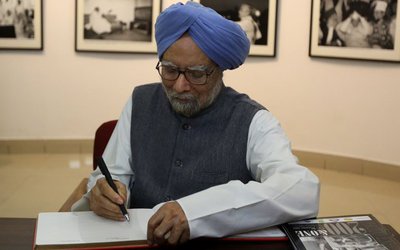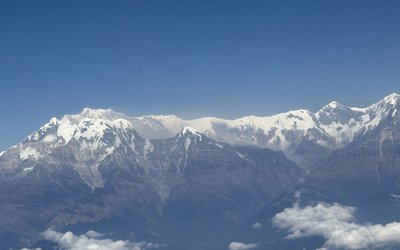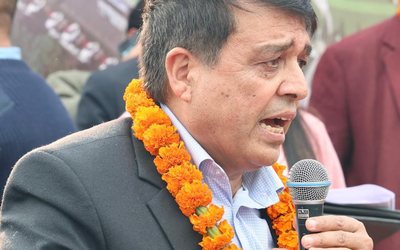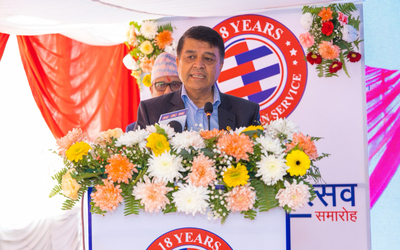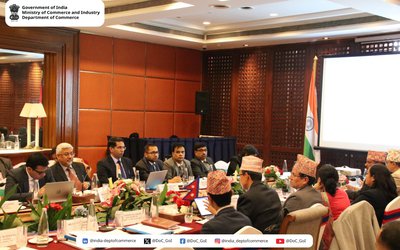Belt and Road Initiative (BRI) was proposed by Chinese President Xi Jinping in 2013 when he became President of China. It was also called OBOR (One Belt One Road) in earlier years and is now being increasingly called BRI.
I first visited China on the invitation of a NGO based in Beijing called CAFIU (Chinese Association for International Understanding) in 2004. It deals with NGOs and think-tanks of many neighbouring countries of China. I was at that time executive member of Nepal Council of World Affairs (NCWA) and got an opportunity to visit China for the first time. My trip was arranged by NCWA (Nepal Council of World Affairs) offices at Kathmandu. It is also a think-tank in Nepal similar to CAIFU. Our trip included visits to Beijing, Shanghai and Chengdu in Sichuan. When we visited China in 2004, there was no talk about OBOR or BRI at that time and in none of the offices that we visited talk were made in this respect. We had at that time also visited China Institute of Strategic Studies (CIISS) affiliated with PLA (Chinese armed forces). Lectures and question and answer sessions there were quite enlightening and informative. CISS website informs “Primarily charged with the analysis of international strategic situation, China’s national security, international political and economic environment, the institute consults and offers policy advice to Chinese governments, military and related institutions. The current chairman of the organization is Xiong Guangkai, former PLA’s deputy chief of staff.”
A workshop on China-Nepal-India Economic Corridor was organized jointly by Nepal Council of World Affairs and China Study Center at Kathmandu, Nepal on 10 August 2016. Although invitation was sent to the Indian Ambassador to Nepal Ranjit Rae, he declined it to participate in the workshop. On the other hand, Dr.Bhekh Thapa, former Minister of Foreign Affairs and Finance of Nepal in his opening remarks talked about embarking on trilateral co-operation Nepal, India and China. Sundar Nath Bhattarai, Acting Chairman of China Study Center in Nepal talked about opening connectivity between China and South Asia via Nepal.
Prof. Dr. Ji Zhiye, President of CICIR (China Institute of Contemporary International Relations) mentioned that leadership from China, India and Nepal had reached their consensus to build China, India and Nepal economic corridor. The Chinese Ambassador to Nepal Wu Chuntai said that the Workshop on trilateral co-operation was being organized for the first time. He said Nepal had sent delegations to China and signed MOU on OBOR. He added that China is the major source of financing and technology.
Why was India reluctant to participate at the Workshop?
According to internet (China.org.cn), CICIR (China Institutes of Contemporary International Relations) is one of top ten think tanks in China.
According to Wikipedia. CICIR is also identified as providing to MSS (Ministry of State Security) intelligence reports to the Politburo Standing Committee of the Communist Party of China. As Wikipedia says the institute is affiliated with Ministry of State Security of China. Prof.Dr. Zhiye is President of CICIR. It was he who gave the opening speech at the inaugural session of the Workshop on August 2016. India and Bhutan were the only two countries in South Asia which didn’t sign the MOU on OBOR. There was Sino-Indian border clashes in the northeastern part of India near its border with Bhutan. It may be remembered that China has claimed the present-day Arunachal Pradesh as “South Tibet”. India has stated that its reluctance to sign OBOR in the Indian subcontinent was due to its claims on Pakistan occupied Kashmir which it calls “Azad” or Free Kashmir and Gilgit including a major part of Karakoram Highway extending from Manshera to Khunjareb on the Pak-Chinese border. It is possible that it could also be due to construction of north-south road via Nepal connecting the hills and Terai in Nepal with the Gangetic Plains in UP and Bihar in India which might make India vulnerable to its security. As there is already a limited Sino-Indian border clashes in Dolkham in the northeast near tri-junction of India-Bhutan-China border on one hand and Ladakh border in the northwest in recent years, there are grounds to believe in this scenario. This is in-spite of Sino-Indian trade reportedly exceeding $89 billion in 2017-18. The trade deficit was $53 billion in China’s favour.(Economic Times).
During the late 1980’s when I was working for the United Nations High Commissioner of Refugees (UNHCR) in Peshawar, Pakistan, I had travelled from Rawalpindi to Gilgit on a pleasure trip by bus. The Karakoram Highway, built by the Chinese is excellent, much better than Kodari (Arniko) Highway in Nepal. The main purpose of this part of highway is to connect the port of Gwadar in Baluchistan with the Chinese border in Sinkiang enabling Pakistan to transport petrol from the Gulf to Western part of China (Sinkiang and Tibet). It is therefore, more important to China than roads connecting Tibet to the Gangetic Plains via Nepal. The purpose of construction of this road could also be to assist Pakistan in any Indo-Pak conflict if any Chinese intervention were required. As this highway passes through part of Kashmir which in under occupation of Pakistan, China has been the biggest beneficiary of de-facto “partition” of Kashmir between India, Pakistan and China when the British left the Indian sub-continent. Pakistan actually “donated” part of erstwhile Kashmir to China so that China could construct a road connecting Tibet with Sinkiang. India has expressed concern about China operating a strategically located port of Gwadar which is situated close to Pakistan and Iran border. This port is also close to strategically important Strait of Hormuz. According to a news report published by Reuters, it will enable the Chinese to move to the Gulf and the Arabian Sea.
I was a student at University of Michigan in the United States in 1962 when there was a limited conflict between India and China. Although it was my first year at an American university, I was a regular reader of the New York Times which was available at Ann Arbor. I got acquainted with a student from People’s Republic of China whose name was Liu. He looked like Chairman Mao and I mentioned it to him. He said he was from the same region where Mao was born. I remember him telling me “Sino-Indian boundary was called McMahon Line and was demarcated by the British in 1914 who were ruling India at that time. It was not decided on the basis of bilateral understanding ”.
Although Nepal is a signatory to OBOR or BRI initiative, little progress has so far (April 2021) been made in selecting and implementing projects under this initiative in Nepal. There is no line agency or institute of the government which is responsible for this from Nepal side. Columnist Hari Roka (Kantipur, 4/1/21) has written about reluctance of Oli government to do any work regarding BRI.
A news report published a Kathmandu daily interviewed Nepalese businessmen involved in trading with China using land route in 2020 when there was long period of lockdown in Nepal due to coronavirus. Imports from China to Nepal was being used such border points as Tatopani(Kodari ) or Rasuwagarhi but it had fallen to only 10 to 15 percent of total due to diversion to Indian ports from China and using Indian routes for entering Nepal (Kantipur, 11/4/21). Another news report from vernacular daily Naya Patrika (23/4/21) states that Nepal has imported goods amounting to Rs 12.97 million in the first nine months of fiscal year 2020-21 using Rasuwa and Tatopani but didn’t export even Rs one worth of goods from these two points north of Kathmandu during this period. Nepal has been requesting the Chinese side several times from its Ministry of Industry, Commerce and Supply to simplify procedures for exporting from Nepal via the Chinese route but has rejected these due to covid pandemic. Although this unusual situation could be due to coronavirus pandemic, this raises serious questions about the sustainability of BRI passing through Nepal.
REFERENCE
1) Mulmi, Amish Raj, All Roads Lead North Westland, Chennai, 2021
2) Adhikari, Rishi Raj, Institute of Foreign Affairs, Silk Route :Enhancing Nepal-China Connectivity, Kathmandu 2015
3) Workshop on China-Nepal-India Economic Corridor, China Study Center, Nepal Council of World Affairs, 2016 Kathmandu
4) The Silk Road, Insight Guides,
5) Salopek, Paul Shadows on the Silk Road, The New York Times, January 20, 2021
6) Baral, Biswas Made in Nepal, Republica, 10/12/2017
7) Bhandari, Keshar Bahadur, Regional Security, National Stability and Prosperity, Suraksha, A Journal of Security Affairs, October 2020, Kathmandu
8) Nepal in Transition ed(Einsiedel, Malone and Pradhan), Cambridge University Press, New Delhi 2012
9) Josse, M.R. Nepal’s Quest for Survival, Nepal Foundation for Advanced Studies (NEFAS), Kathmandu, 2020
10) Kantipur, 11/4/21, Businessmen abandoning northern routes for Sino-Nepal trade
11) The Kathmandu Post, 7/2/2013, India ‘concerned’ over China running Pak port
12) Naya Patrika, 23/4/21

